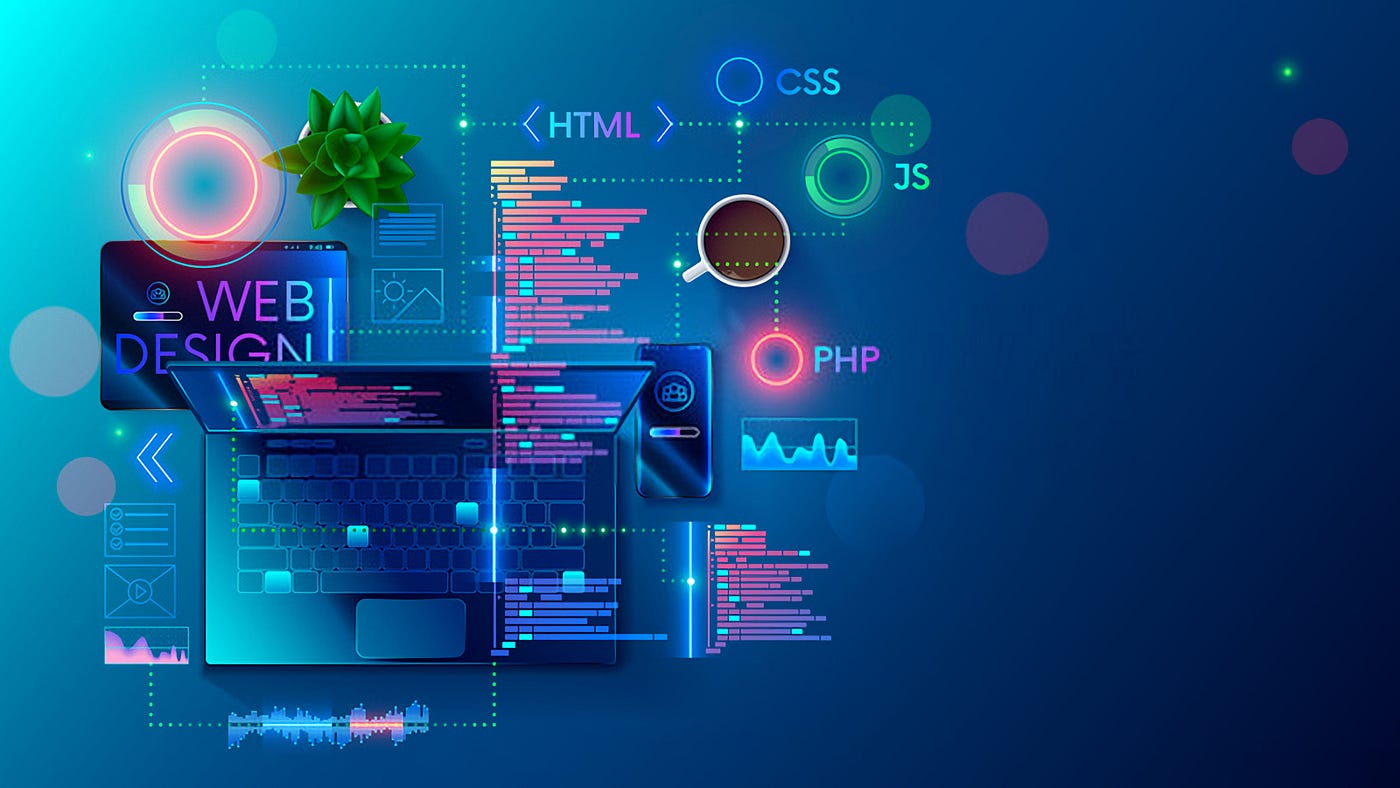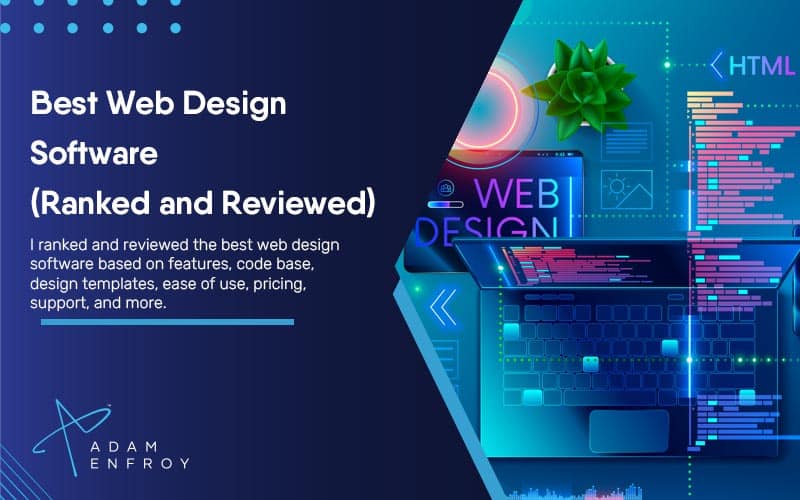All Categories
Featured
Table of Contents
- – Webdesign Designs, Themes, Templates And ... -...
- – Mrw Web Design - Wordpress Websites For Nonpr...
- – Responsive Web Design Certification - Freecod...
- – Custom Web Design, Development & Digital Mark...
- – Web Design Services - Networksolutions.com Ti...
- – What Is Web Design? The Ultimate Guide To Web...
- – Webpage Design (Article) - Further Learning ...
- – Why Web Design Is Dead - - Ux Magazine Tips ...
- – Responsive Web Design - A List Apart Tips an...
- – Web Design Services + Website Development Ag...
- – Top 30 Web Design Companies - Apr 2022 - Des...
Webdesign Designs, Themes, Templates And ... - Dribbble Tips and Tricks:
Quick summary Use and the energy, not the visual design, identify the success or failure of a site. Given that the visitor of the page is the only person who clicks the mouse and for that reason decides everything, user-centric design has developed as a standard approach for successful and profit-oriented web style - web design frederick md.
and the energy, not the visual design, figure out the success or failure of a website. Considering that the visitor of the page is the only person who clicks the mouse and therefore chooses everything, user-centric style has ended up being a standard technique for successful and profit-oriented website design. If users can't utilize a function, it may as well not exist.
g. where the search box must be positioned) as it has already been done in a variety of short articles; instead we concentrate on the approaches which, used properly, can lead to more sophisticated style choices and streamline the procedure of perceiving provided information. Please see that you might be thinking about the usability-related articles we have actually published before: Principles Of Excellent Website Style And Efficient Web Style Guidelines, In order to use the principles effectively we initially require to comprehend how users interact with websites, how they believe and what are the fundamental patterns of users' habits.
Mrw Web Design - Wordpress Websites For Nonprofits ... Tips and Tricks:
Visitors look at each new page, scan some of the text, and click on the first link that catches their interest or vaguely looks like the important things they're looking for. There are large parts of the page they don't even look at. Many users look for something interesting (or beneficial) and clickable; as quickly as some promising prospects are found, users click.
If a page supplies users with high-quality material, they are willing to jeopardize the content with advertisements and the design of the website. This is the reason that not-that-well-designed sites with top quality content acquire a great deal of traffic over years. Material is more crucial than the design which supports it.

Users don't check out, they scan. Notification how "hot" areas abrupt in the middle of sentences. This is normal for the scanning procedure. Extremely basic concept: If a website isn't able to satisfy users' expectations, then designer stopped working to get his task done appropriately and the company loses money. The greater is the cognitive load and the less intuitive is the navigation, the more willing are users to leave the website and look for alternatives.
Responsive Web Design Certification - Freecodecamp.org Tips and Tricks:
Neither do they scan webpage in a direct style, going sequentially from one site section to another one. Instead users satisfice; they pick the first sensible alternative. As quickly as they discover a link that appears like it might result in the goal, there is an excellent possibility that it will be immediately clicked.
It doesn't matter to us if we comprehend how things work, as long as we can use them. If your audience is going to imitate you're designing signboard, then style great billboards." Users wish to be able to manage their web browser and rely on the constant data discussion throughout the website.
If the navigation and site architecture aren't user-friendly, the variety of concern marks grows and makes it harder for users to comprehend how the system works and how to get from point A to point B. A clear structure, moderate visual hints and easily identifiable links can assist users to find their path to their aim.
Custom Web Design, Development & Digital Marketing ... Tips and Tricks:

claims to be "beyond channels, beyond items, beyond distribution". What does it indicate? Given that users tend to check out websites according to the "F"-pattern, these 3 declarations would be the first components users will see on the page once it is filled. The style itself is simple and user-friendly, to understand what the page is about the user needs to browse for the answer.
When you've attained this, you can communicate why the system works and how users can benefit from it. People will not use your web site if they can't find their way around it. 2. Do Not Squander Users' Persistence, In every task when you are going to provide your visitors some service or tool, try to keep your user requirements very little.
Newbie visitors want to, not filling long web forms for an account they may never use in the future. Let users check out the site and discover your services without forcing them into sharing personal data. It's not reasonable to require users to enter an e-mail address to evaluate the function.
Web Design Services - Networksolutions.com Tips and Tricks:
And that's what you want your users to feel on your web website. The registration can be done in less than 30 seconds as the type has horizontal orientation, the user doesn't even require to scroll the page.
A user registration alone suffices of an obstacle to user navigation to minimize incoming traffic. 3. Manage To Focus Users' Attention, As websites provide both fixed and vibrant content, some elements of the user interface draw in attention more than others do. Certainly, images are more appealing than the text just as the sentences marked as strong are more appealing than plain text.
Focusing users' attention to particular areas of the website with a moderate use of visual elements can help your visitors to get from point A to point B without thinking of how it really is supposed to be done. The less enigma visitors have, the they have and the more trust they can establish towards the business the site represents.
What Is Web Design? The Ultimate Guide To Website Design ... Tips and Tricks:
4. Aim For Feature Exposure, Modern website design are usually criticized due to their method of guiding users with aesthetically appealing 1-2-3-done-steps, big buttons with visual results and so on. From the style point of view these components in fact aren't a bad thing. On the contrary, such as they lead the visitors through the website material in a very simple and user-friendly way.
The website has 9 main navigation options which are visible at the first glance. What matters is that the content is well-understood and visitors feel comfy with the way they engage with the system.
Rather a price: simply what visitors are looking for. An ideal service for efficient writing is touse short and concise phrases (come to the point as quickly as possible), usage scannable design (classify the content, utilize multiple heading levels, utilize visual components and bulleted lists which break the circulation of consistent text blocks), usage plain and objective language (a promotion does not need to sound like advertisement; offer your users some reasonable and objective factor why they must use your service or stay on your website)6.
Webpage Design (Article) - Further Learning - Khan Academy Tips and Tricks:
Users are hardly ever on a site to delight in the design; additionally, in many cases they are trying to find the info despite the style - web design frederick md. Pursue simplicity instead of intricacy. From the visitors' perspective, the very best website style is a pure text, without any ads or further content blocks matching precisely the inquiry visitors utilized or the content they have actually been trying to find.
Finch clearly presents the details about the site and offers visitors an option of choices without overcrowding them with unnecessary content. Not only does it assist to for the visitors, however it makes it possible to perceive the details presented on the screen.
Complex structures are more difficult to read, scan, evaluate and work with. If you have the option between separating two style sections by a visible line or by some whitespace, it's normally much better to use the whitespace option. (Simon's Law): the better you handle to offer users with a sense of visual hierarchy, the much easier your content will be to view.
Why Web Design Is Dead - - Ux Magazine Tips and Tricks:
The same conventions and guidelines need to be used to all elements.: do the most with the least amount of cues and visual elements. Clarity: all elements ought to be developed so their significance is not unclear.
Conventions Are Our Buddies, Conventional design of site elements does not result in a boring website. In reality, as they lower the learning curve, the need to find out how things work. For circumstances, it would be an usability nightmare if all sites had different visual presentation of RSS-feeds. That's not that various from our regular life where we tend to get utilized to fundamental concepts of how we arrange information (folders) or do shopping (positioning of products).
understand what they're expecting from a site navigation, text structure, search positioning etc. A case in point from usability sessions is to equate the page in Japanese (assuming your web users don't know Japanese, e. g. with Babelfish) and provide your use testers with a job to discover something in the page of various language.
Responsive Web Design - A List Apart Tips and Tricks:
Steve Krug recommends that it's better to, but benefit from conventions when you do not. 10. Test Early, Test Frequently, This so-called TETO-principle ought to be applied to every website design project as functionality tests often provide into substantial problems and concerns related to a given design. Test not too late, not too little and not for the incorrect factors.
Some important indicate bear in mind: according to Steve Krug, and testing one user early in the project is much better than screening 50 near completion. Accoring to Boehm's very first law, mistakes are most frequent during requirements and style activities and are the more expensive the later they are removed.
That suggests that you develop something, test it, fix it and then check it once again. There might be problems which have not been discovered during the very first round as users were practically obstructed by other problems.
Web Design Services + Website Development Agency Tips and Tricks:

This holds for designers too. After you have actually worked on a website for few weeks, you can't observe it from a fresh viewpoint any longer. You understand how it is constructed and therefore you know exactly how it works you have the wisdom independent testers and visitors of your site would not have.
It can be connected to other locations such as graphic design, user experience, and multimedia arts, however is more aptly seen from a technological standpoint. It has actually ended up being a big part of people's daily lives. It is tough to imagine the Web without animated graphics, various designs of typography, background, videos and music.

During 1991 to 1993 the World Wide Web was born. Text-only pages could be viewed utilizing an easy line-mode browser. There had actually been no integrated technique to graphic style aspects such as images or noises.
Top 30 Web Design Companies - Apr 2022 - Designrush Tips and Tricks:
The W3C was created in October 1994 to "lead the Web to its full potential by developing common procedures that promote its advancement and ensure its interoperability." This prevented any one company from monopolizing a propriety web browser and programming language, which might have modified the effect of the World Wide Web as a whole.
As this has taken place the technology of the web has likewise moved on. There have also been significant changes in the method individuals utilize and access the web, and this has actually altered how sites are created.
Learn more about Lovell Media Group LLC or TrainACETable of Contents
- – Webdesign Designs, Themes, Templates And ... -...
- – Mrw Web Design - Wordpress Websites For Nonpr...
- – Responsive Web Design Certification - Freecod...
- – Custom Web Design, Development & Digital Mark...
- – Web Design Services - Networksolutions.com Ti...
- – What Is Web Design? The Ultimate Guide To Web...
- – Webpage Design (Article) - Further Learning ...
- – Why Web Design Is Dead - - Ux Magazine Tips ...
- – Responsive Web Design - A List Apart Tips an...
- – Web Design Services + Website Development Ag...
- – Top 30 Web Design Companies - Apr 2022 - Des...
Latest Posts
Web Design Services - Verizon Small Business Essentials Tips and Tricks:
Top Web Design Companies - Find Web Designers Here Tips and Tricks:
Top Web Design Courses Online - Updated [April 2022] - Udemy Tips and Tricks:
More
Latest Posts
Web Design Services - Verizon Small Business Essentials Tips and Tricks:
Top Web Design Companies - Find Web Designers Here Tips and Tricks:
Top Web Design Courses Online - Updated [April 2022] - Udemy Tips and Tricks: